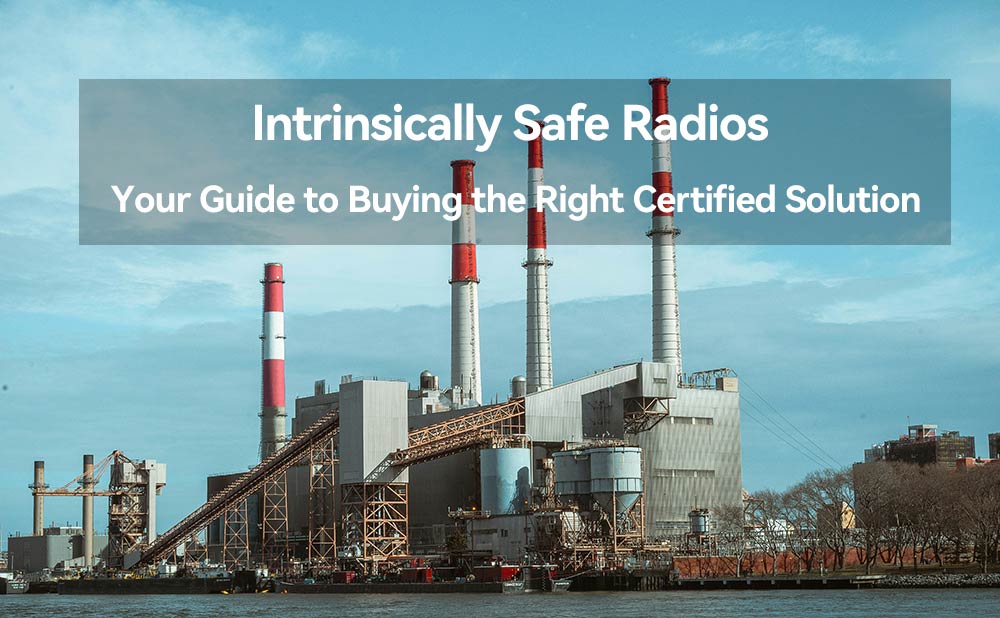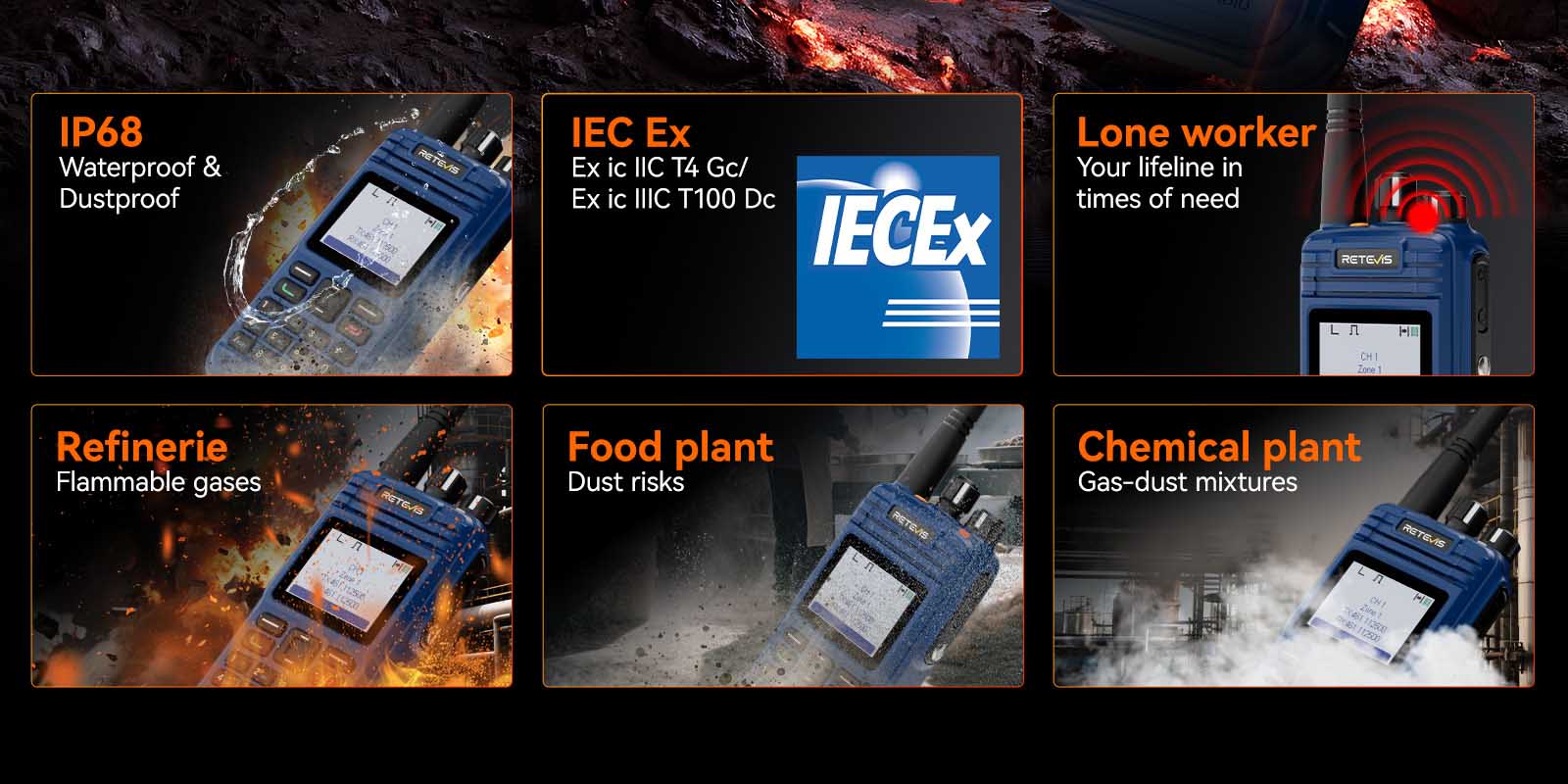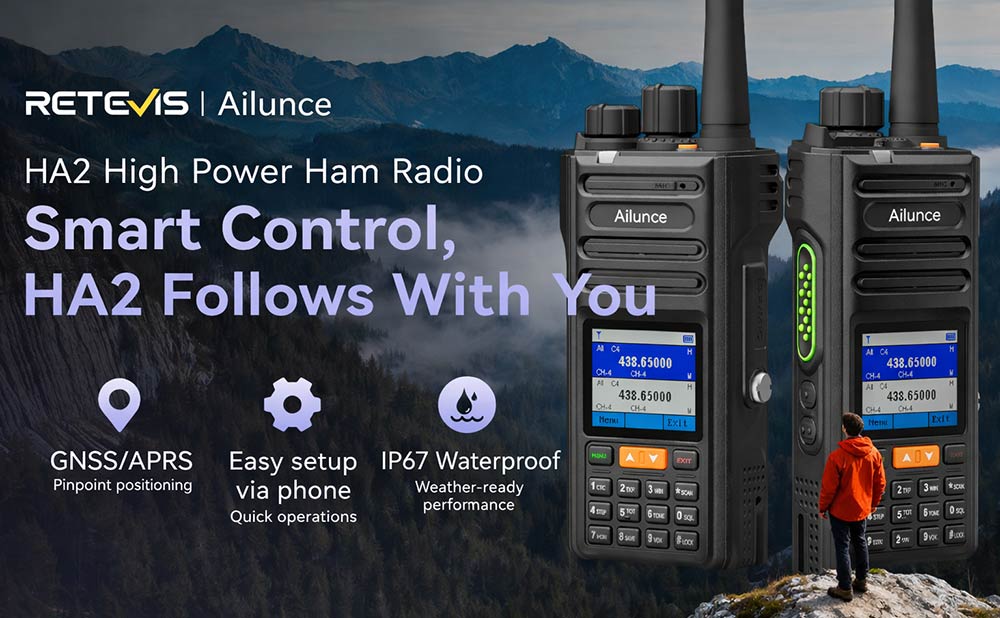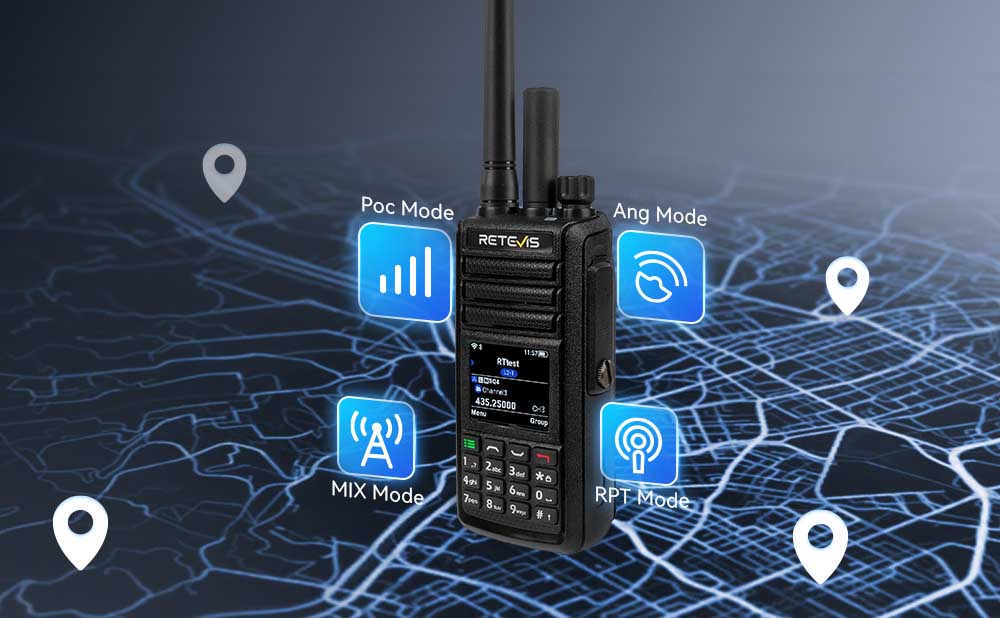Table of Contents
Intrinsically Safe Radios: Your Guide to Buying the Right Certified Solution
- Posted by:Lucky
- 0 Comments

Introduction
In industries like oil & gas, chemical plants, pharmaceuticals, and food processing, a single spark can lead to catastrophic consequences. That’s why intrinsically safe (IS) radios are essential—they enable secure, explosion-proof communication in hazardous environments where standard devices could ignite gases, dust, or flammable liquids.
But how do these radios differ from standard two-way radios? What certifications (ATEX, IECEx) should you look for? And how do you choose the right IS radio for your industry?
In this guide, we’ll cover:
✅ What is an Intrinsically Safe Radio?
✅ Intrinsically Safe Radios vs Standard Radios
✅ Certification Standards: ATEX and IECEx
✅ Industry Applications of Intrinsically Safe Radios
✅ How to Choose an Intrinsically Safe Radio
✅ Core Application Scenarios for Intrinsically Safe Radios
What is an Intrinsically Safe Radio?
An intrinsically safe radio is a type of two-way communication device specifically designed for use in hazardous environments. These radios are built to be explosion-proof and prevent sparks or heat from the device that could ignite flammable substances or gases in the surroundings. This makes them a necessity in industries dealing with volatile chemicals, gases, or materials.
Unlike standard radios, intrinsically safe radios are engineered with components that do not generate enough heat or energy to cause a spark, even in the most hazardous locations. This is achieved by using specially designed circuits, low power output, and advanced safety features.
Intrinsically Safe Radios vs Standard Radios
The core difference between Intrinsically Safe (IS) Radios and Standard Radios lies in their explosion-proof safety design, especially in hazardous environments (e.g., oil & gas, chemical plants, or dust-prone areas). Below are the main distinctions:
1. Construction & Materials
Intrinsically Safe Radios:
- Feature explosion-proof construction, often with reinforced, sealed enclosures to prevent exposure of electrical components.
- Use anti-static materials to avoid spark generation from friction.
- Batteries are specially encapsulated to prevent overheating or short circuits.
Standard Radios:
- Have simpler, non-explosion-proof housing designs.
- No special protection against sparks or heat buildup.
2. Operating Environment
IS Radios:
- Designed for hazardous areas (e.g., oil rigs, chemical plants, grain silos).
- Safe for use in flammable gas (methane, hydrogen) or dust atmospheres.
Standard Radios:
- Suitable only for non-hazardous locations (e.g., construction sites, warehouses, schools).
- Prohibited in explosive environments.
3. Safety Certifications
IS Radios:
- Comply with ATEX, IECEx, or other intrinsic safety standards.
Standard Radios:
- Lack explosion-proof certifications.
- Not tested for use in flammable environments.
4. Cost & Maintenance
IS Radios:
- Higher price (typically more expensive than standard radios) due to stringent safety features.
Standard Radios:
- More affordable but pose legal and safety risks if used in hazardous zones.
Certification Standards: ATEX and IECEx
To ensure that a radio is safe for use in hazardous environments, it must meet rigorous safety standards and certifications. The two most important certifications for intrinsically safe radios are ATEX and IECEx.
ATEX Certification
ATEX is a European standard that certifies products for use in explosive atmospheres. ATEX radios are specifically designed to prevent any electrical or mechanical energy from igniting the surrounding gases or dust. These radios are crucial in industries like petrochemical plants, chemical plants, food processing, and oil and gas drilling.
IECEx Certification
IECEx (International Electrotechnical Commission) is a global standard for products used in hazardous environments. IECEx approved radios are recognized internationally and follow strict guidelines for preventing explosions in volatile atmospheres.
Both ATEX and IECEx certifications ensure that the radio is safe to use in potentially explosive environments and that it meets the highest global safety standards.
Know more details about ATEX and IECEx Certification: https://www.retevis.com/blog/iecex-vs-atex-key-differences-and-how-to-choose-safe-explosion-proof-radios-for-hazardous-environments
Industry Applications of Intrinsically Safe Radios
Intrinsically safe two way radios are critical in a variety of high-risk industries where safety and communication are crucial. Below are some of the most common applications:
Oil and Gas: Intrinsically safe 2 way radios are used on drilling rigs, offshore platforms, and refineries to ensure clear communication while reducing the risk of ignition.
Chemical Plants: In environments where volatile chemicals are present, ATEX approved radios are essential to avoid any sparks or heat that could trigger a chemical reaction.
Pharmaceuticals: In facilities where combustible powders or chemicals are used, intrinsically safe radios are employed to ensure both safety and seamless communication.
How to Choose an Intrinsically Safe Radio?
When selecting an intrinsically safe radio, there are several factors to consider:
1. Certification
Ensure that the radio is ATEX and/or IECEx certified, depending on your location and industry requirements. These certifications guarantee that the radio is safe to use in explosive atmospheres without risking sparks or ignition. Make sure the model meets the specific regulations required for your work environment, such as those in chemical plants, mining sites, or oil rigs.
2. Range and Battery Life
Range: The communication range is essential for ensuring clear coverage across your facility or outdoor site. Look for radios with long range that meets the size of your facility or the distances you need to communicate over.
Battery Life: A reliable battery is crucial in hazardous environments where recharging may not always be possible. Long shifts or emergency situations demand radios that can operate continuously without the need for constant recharging. The Retevis E2 explosion proof dmr two way radio features a 1500mAh battery that provides: Analog runtime: >14 hours; Digital runtime: >20 hours; Standby time: 36 hours.
This ensures that you can rely on your radio for extended periods without frequent charging, which is particularly useful in emergency situations. With a charging time of less than 4.5 hours, the Retevis E2 intrinsically safe radio is ready to go quickly, ensuring that downtime is minimized.
3. Durability and Waterproofing
Choose a radio that is built to withstand tough conditions. An IP rating of IP67 or higher indicates that the radio is dust-tight and can withstand temporary immersion in water. The Retevis E2 explosion-proof radio is equipped with an IP68 waterproof and dustproof rating, meaning it is completely sealed against dust and can withstand being submerged in water. Additionally, it meets MIL-STD-810G standards, ensuring it is shock-resistant and can endure extreme environments, from high temperatures to harsh weather conditions.
4. Communication Safety and Audio Clarity
Clear and secure communication is essential in hazardous environments. Look for two way radios that deliver strong, reliable signals with minimal interference. Additionally, features such as emergency alarms and voice clarity enhancements can ensure your team’s safety by providing quick, clear communication when it matters most. Radios like the E2 dmr portable two way radio offer AES256 secure and clear communication, even in challenging environments.
5. Brand Reputation and Warranty
Opt for a brand with a strong reputation for quality and customer service, ensuring that you can get support when needed. A trustworthy brand will also provide easy access to repairs or replacements, offering peace of mind that your investment is protected.
Core Application Scenarios for Intrinsically Safe Radios
Intrinsically safe radios are designed to work in environments where safety is a top priority. Some of the core scenarios where these radios are most commonly used include:
Chemical Facilities: Communication is critical in managing hazardous chemicals, and ATEX certified radios help maintain safe and efficient operations.
Petrochemical Plants: In these high-risk environments, having reliable communication systems such as explosion-proof walkie talkies ensures that workers stay in contact without triggering dangerous situations.
Plastic Manufacturing Plants: In plastic manufacturing, where certain chemicals and flammable materials are used, intrinsically safe radios ensure reliable communication without posing any ignition risk.
Offshore Oil Rigs: On offshore oil rigs, intrinsically safe radios ensure that workers can communicate effectively while minimizing the risk of ignition.
Conclusion: The Importance of Intrinsically Safe Radios for Safety
In hazardous environments, reliable communication is not just a luxury but a necessity. Intrinsically safe two way radios are essential tools in ensuring safety and preventing accidents in explosive atmospheres. Whether in oil and gas, food processing, or chemical industries, having the right communication tools can make all the difference in ensuring a safe working environment.
Investing in high-quality ATEX radios or IECEx certified radios will help your business meet safety standards and protect workers from potential hazards. When selecting an intrinsically safe radio, always consider the certification, features, and brand reputation to ensure maximum safety and efficiency.
If you are in need of intrinsically safe radios for your hazardous environment, contact us today to learn more about our range of ATEX and IECEx certified radios. Stay safe and connected with the best communication tools for high-risk industries.







Comments
No data Yet